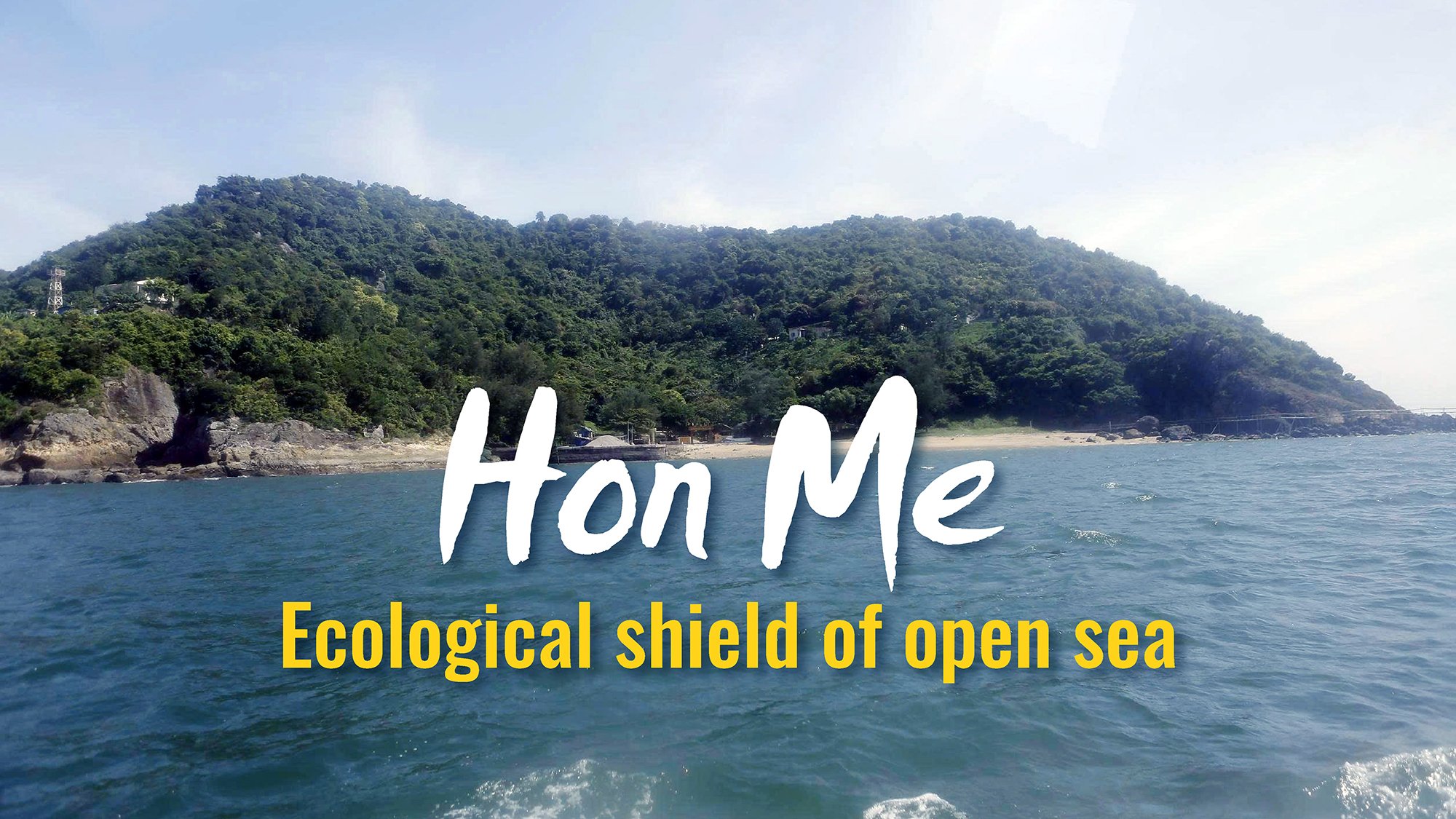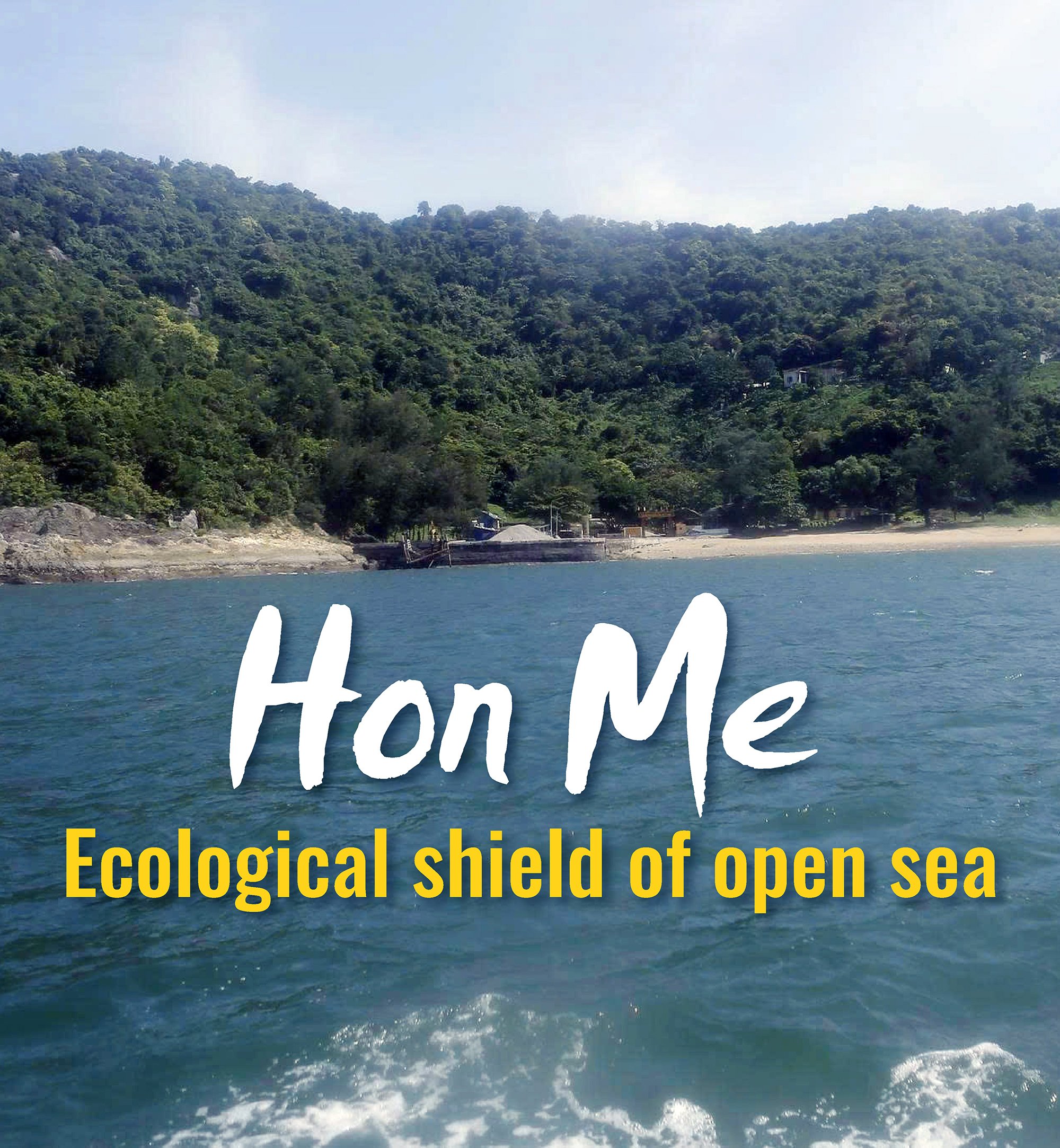
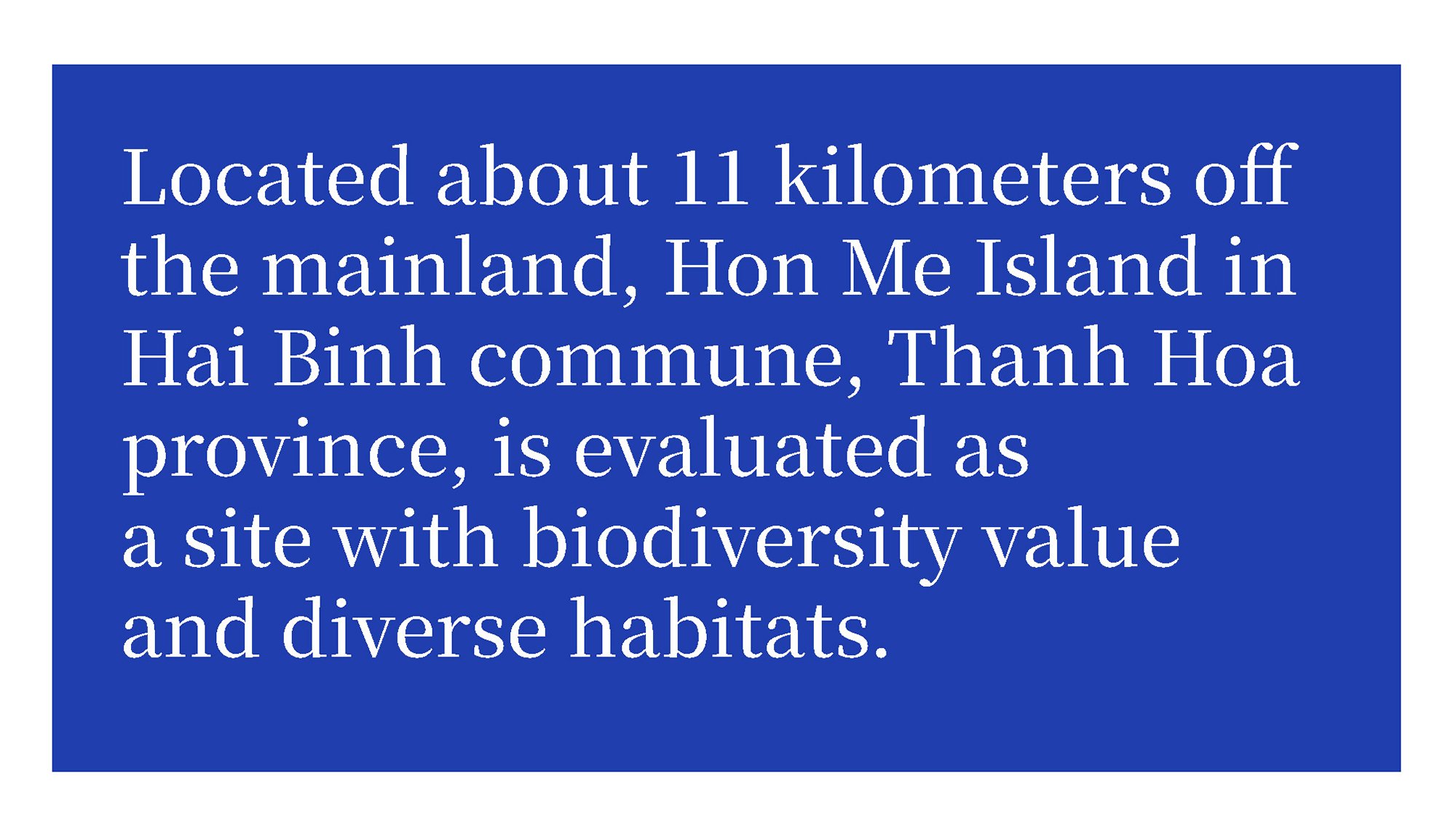

The Hon Me archipelago lies in southern Thanh Hoa province, about 11 kilometers off the mainland and within the administrative boundary of Hai Binh commune. The total area of the emerged islands is approximately 537.5 hectares, of which Hon Me Lon Island covers 450 hectares. The remaining area belongs to more than 10 smaller islands.
This area features a tropical monsoon climate influenced by two wind seasons: the northeast and southeast monsoons. The island has no permanent residents; only military forces are stationed there. However, due to its proximity to the mainland, fishing activities in the surrounding waters are bustling.

The Hon Me archipelago is evaluated as a site with biodiversity value and diverse habitats. According to previous survey results, the waters surrounding Hon Me Island are home to a wide variety of marine species. The area has up to 440 marine species across 165 genera, including 133 species of phytoplankton, 46 species of zooplankton, 8 species of seaweed, 56 species of coral, 141 species of benthic organisms, and 55 species of coral reef fish (based on research published by the Asian Development Bank in 1999).
According to the results of a coral reef ecosystem survey conducted in the Hon Me archipelago in the 2010-2011 period, a total of 72 coral species were recorded in the area, including two species listed in the Vietnam Red Data Book. Corals are scattered along the island shores, typically forming small colonies. Hard corals are commonly distributed at depths of 3-6 meters, while soft corals and black corals are found at greater depths, ranging from 5 to 10 meters. On the western side of Hon Me Lon Island, particularly at the transect position between West Me Lon 1 and Khe Luong, large colonies of branching corals are present, distributed within a distance of up to 25 meters from the island’s shoreline.
In many coral reef areas, only massive coral groups of the Porites genus remain. These groups have developed relatively well and provide suitable habitats for the growth of coral reef fish species such as groupers, sweetlips, and red snappers.
Survey results also show that seaweed around Hon Me Island is relatively evenly distributed across the surveyed transects. However, species richness remains low, and the biomass of each species is minimal. A total of 15 seaweed species have been recorded in this sea area, serving primarily as supplementary contributors to the overall biodiversity of the Hon Me archipelago's marine area. All of the seaweed species documented during the surveys are found in the subtidal zone.
Regarding the forest ecosystem of the Hon Me archipelago, surveys conducted from 2016 to 2018 indicate that the secondary tropical broadleaf forest ecosystem is undergoing recovery and is being relatively well preserved, with high coverage. In terms of species composition, the island’s flora includes over 400 recorded plant species, around 100 of which are precious medicinal and herbal plants. Many of these plants are sources of essential oils, edible vegetables, fruits, and raw materials for paper, fiber, and handicraft production. In terms of fauna, no precise survey data on the island’s fauna is currently available. However, a significant population of monkeys has been observed on the island, along with other animal species such as ferrets, squirrels, and various snakes.
At present, Hon Me is designated solely for national defense and security purposes, with no permanent residents. As a result, the island has retained its pristine beauty and is rich and diverse in natural resources. Nevertheless, its proximity to the mainland has led to bustling fishing activities in the surrounding waters, particularly during the fishing season.
The sea area around Hon Me is a famous fishing ground, with various seafood, especially squid and lobster. According to experienced local fishermen, Hon Me is one of the most productive squid fishing areas in the Gulf of Tonkin. The pristine beauty of Hon Me today is largely attributed to the efforts of generations of officers and soldiers of the Vietnam People’s Army, who have played a vital role in protecting and preserving it over the past 50 years.
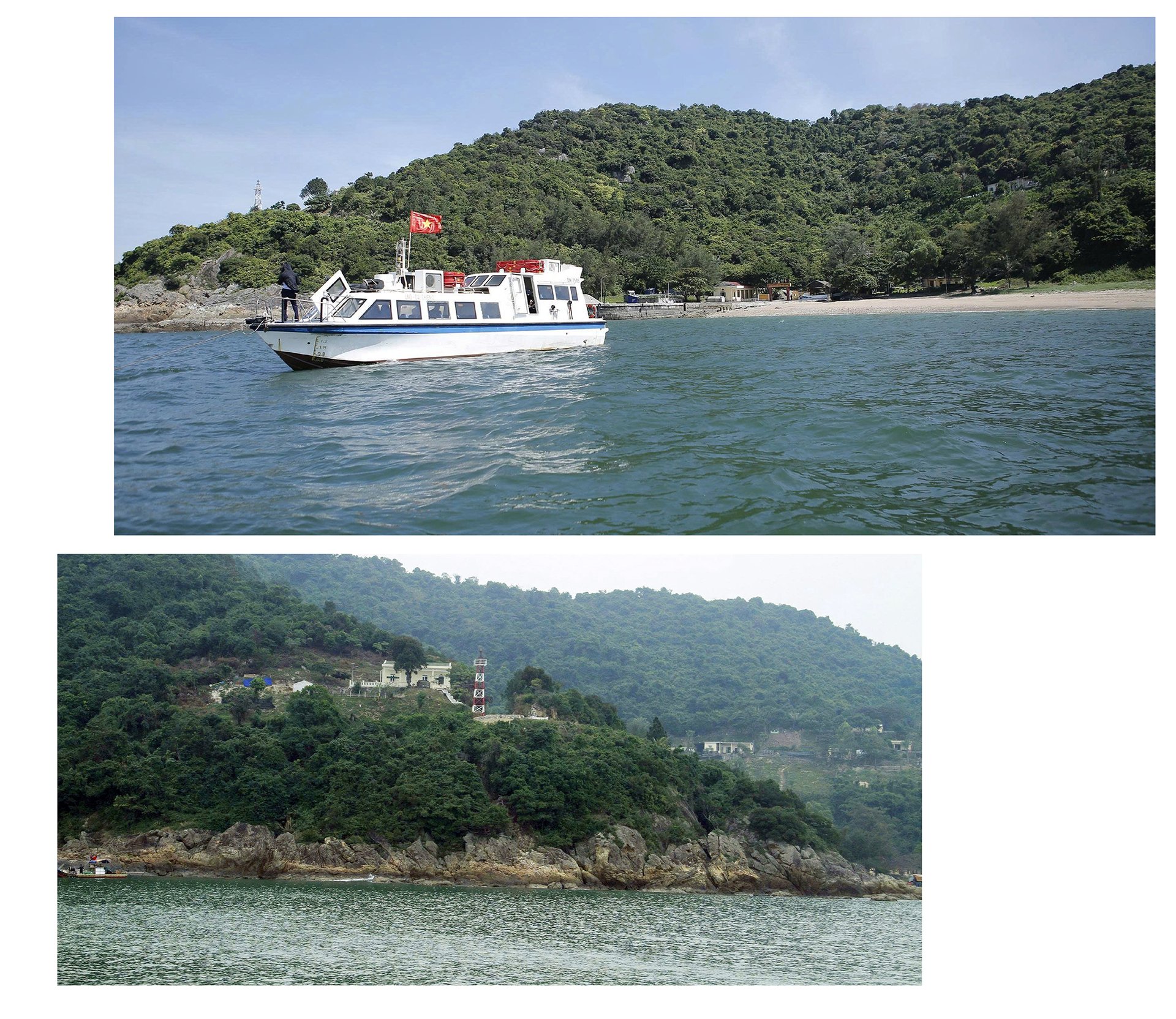
According to the Thanh Hoa Department of Agriculture and Environment, despite the area's rich and diverse marine biological resources, effective and sustainable management and exploitation have not yet been achieved. In the surrounding waters, using explosives, fine-mesh nets, and illegal fishing tools still persists, becoming a problem and challenge for managing aquatic resources in this area.
Amid growing pressure from fishing and socio-economic development activities, and especially the impacts of climate change and rising sea levels, the region’s marine biological resources are facing numerous difficulties and challenges. These include overexploitation of resources, destructive fishing practices, severe degradation of many coral reef areas, and insufficient attention to managing the ecological environment and aquatic resources, all of which threaten the survival and development of marine biological resources in the area. Furthermore, the awareness and capacity of local fishing communities regarding the protection of aquatic resources remain very limited.
Although Thanh Hoa has not yet established an official marine protected area under the national planning framework, the Hon Me Island area's biological and resource potential fully meets the criteria for biodiversity, species reproductive function, and ecological significance within the regional marine ecosystem.
Thanh Hoa province coordinated with the Research Institute for Marine Fisheries to conduct surveys to assess aquatic resources and habitats in offshore and coastal zones. The Hon Me area was prioritized as a key survey site. By October 2025, the survey results are expected to provide a critical scientific basis for announcing fishing quotas and establishing zones for habitat protection and restoration.
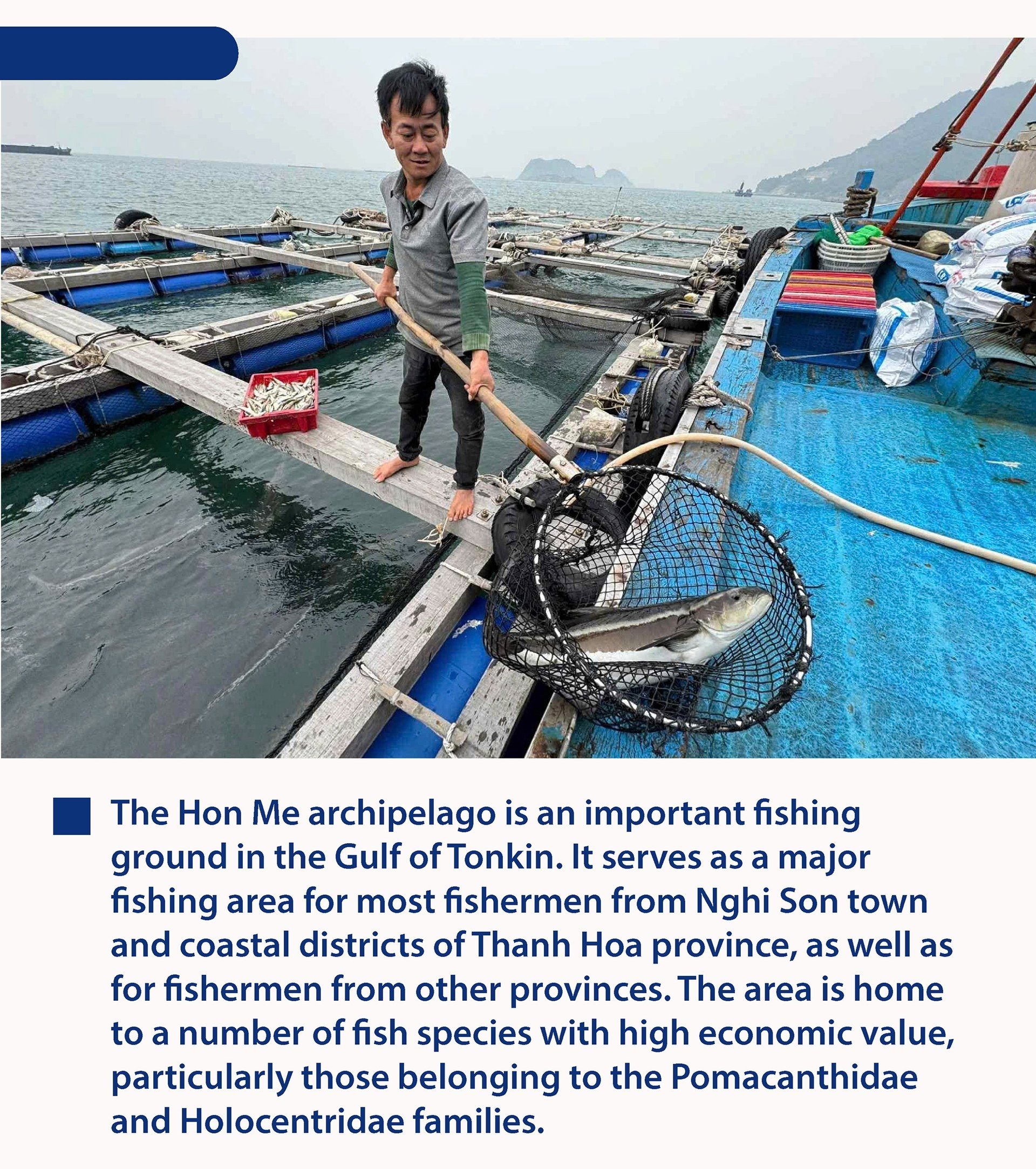
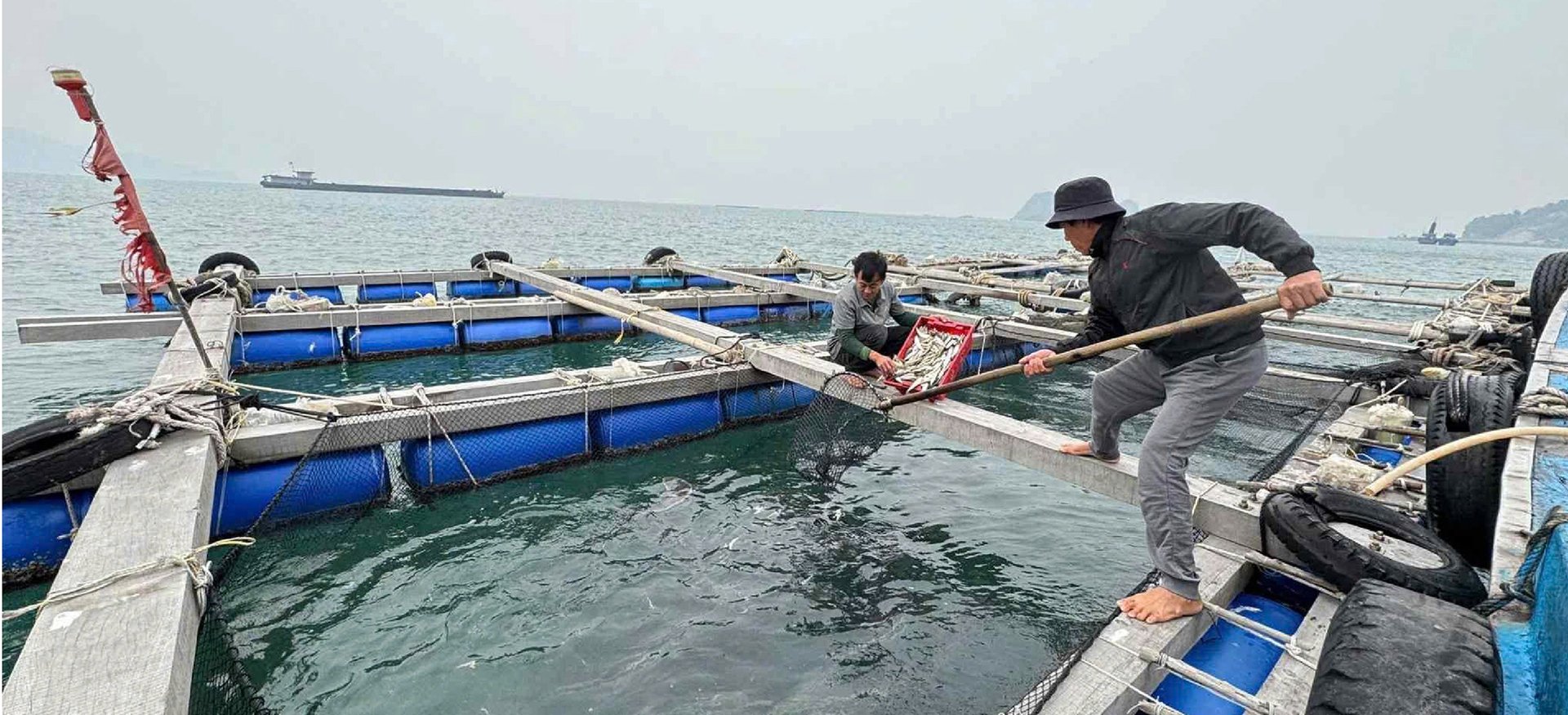

Hon Me is among the sea areas with the highest biological value in Thanh Hoa province. Together with nearby regions such as Hon Ne, Hon Mieng, Hon Vat, and Hon Goc, Hon Me forms a diverse marine ecosystem that serves as a habitat for hundreds of species of fish, shrimp, squid, and pearl oysters. It is also one of the province’s principal fishing grounds, notably including the offshore fish zone of Lach Hoi (southeast of Hon Me) with an estimated stock of 15,000–20,000 tons of fish and an annual harvest capacity of 7,000–10,000 tons.
Beyond its fishing value, Hon Me holds significant potential for marine farming using cages, particularly for high-value species such as grouper, amberjack, and lobster.
Mr. Le Dinh Dung, a resident of the Tien Phong residential group, Hai Binh ward, is a pioneer in marine farming in this area. In 2023, he invested in cages to raise 120,000 pomfrets, 30,000 groupers, and 50,000 cobia, with a total investment of nearly VND 15 billion in offshore cage farming near Hon Me Island.
Instead of using self-made bamboo or wooden cages, which are prone to damage, cause environmental pollution, and harm the ecosystem, Mr. Dung opted for HDPE plastic cages, which not only improve farming efficiency but also help minimize negative impacts on the marine environment.
“HDPE cages do not rust or rot like wood, and they do not release toxins into the water, making them both durable and clean. In addition, to maintain a clean water environment around the farming area, I feed the fish just enough to avoid excess feed sinking to the bottom and causing pollution,” Mr. Dung explained.
According to Mr. Dung, using high-quality fingerlings not only ensures healthy fish growth and reduces the need for medication and antibiotics during the farming process but also helps minimize impacts on the marine environment.
Mr. Dung added that marine farming has enabled him to harvest approximately 80–100 tons of seafood annually, generating an income of around VND 700 million annually after deducting expenses.
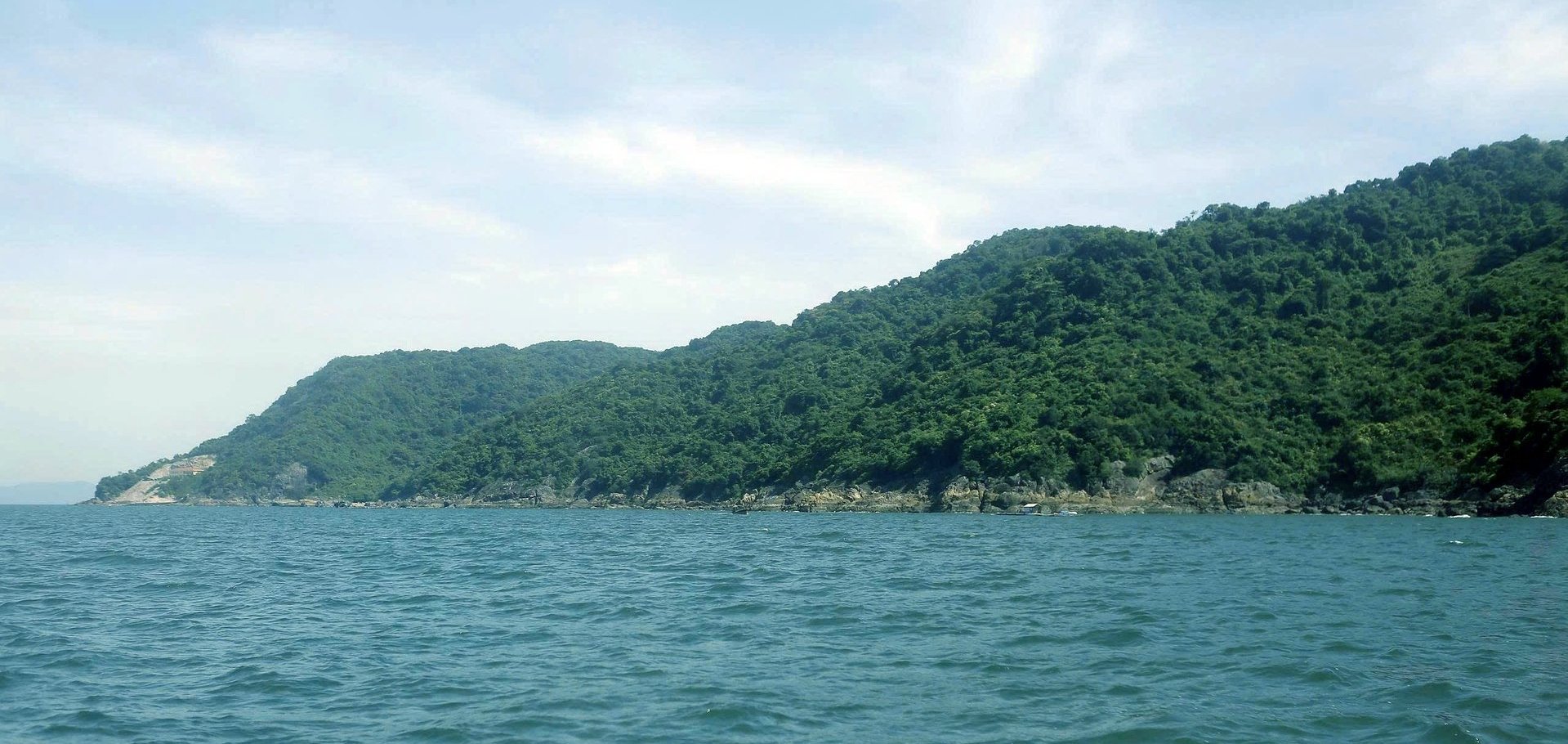
Mr. Nguyen Xuan Hung, Head of the Aquaculture Division under the Thanh Hoa Sub-Department of Seas, Islands and Fisheries, stated that promoting aquaculture is an essential and necessary direction in the context of natural aquatic resources rapidly declining. Reducing the intensity of exploitation, particularly destructive fishing methods such as trawling, electric shock, and fishing in the wrong areas or seasons, will contribute to protecting marine species, especially those with high conservation value.
“Offshore marine farming models using new technologies, such as HDPE plastic cages or polyculture systems, contribute to diversifying aquatic products, improving production efficiency, and reducing pressure on natural ecosystems. This is also a way to ‘ease the burden’ on the marine environment and limit overfishing.
Currently, in the Hon Me area, more than a dozen households have invested in aquaculture with a total cage farming scale of approximately 20,000 m3. At the same time, functional agencies continue to encourage local residents to gradually shift from fishing to aquaculture, combined with resource conservation measures such as banning exploitation during the spawning season, regenerating resources through stocking, and inspecting and monitoring fisheries,” said Mr. Hung.
“These measures have been helping the marine ecosystem gain time and conditions for recovery, thereby preserving the rich biodiversity of this island-sea area. However, to ensure the sustainable development of aquaculture, competent authorities must soon complete the procedures for leasing and allocating sea surface areas so that people can feel secure in long-term production,” Mr. Hung added.
In addition, one of the brightspots in aquatic resource protection in Thanh Hoa in general and Hon Me Island in particular is the tightened management and strict handling of violations. In the 2020-2025 period alone, the province handled over 625 administrative violations in the fisheries sector, with total fines exceeding VND 6 billion. Common offenses include using explosives, electric shock devices, and banned fishing tools; fishing in unauthorized areas or using improper methods; losing connection with the VMS (Vessel Monitoring System); and violating foreign waters.
In parallel with the above measures, the stocking activity to regenerate aquatic resources has been consistently maintained and has evolved into a widespread movement within the community. Since 2019, the province has released more than 6.4 million giant tiger prawn seeds and 19,000 green crabs into coastal areas, contributing to improving the ecological environment, restoring species population densities, and raising public awareness about environmental protection.
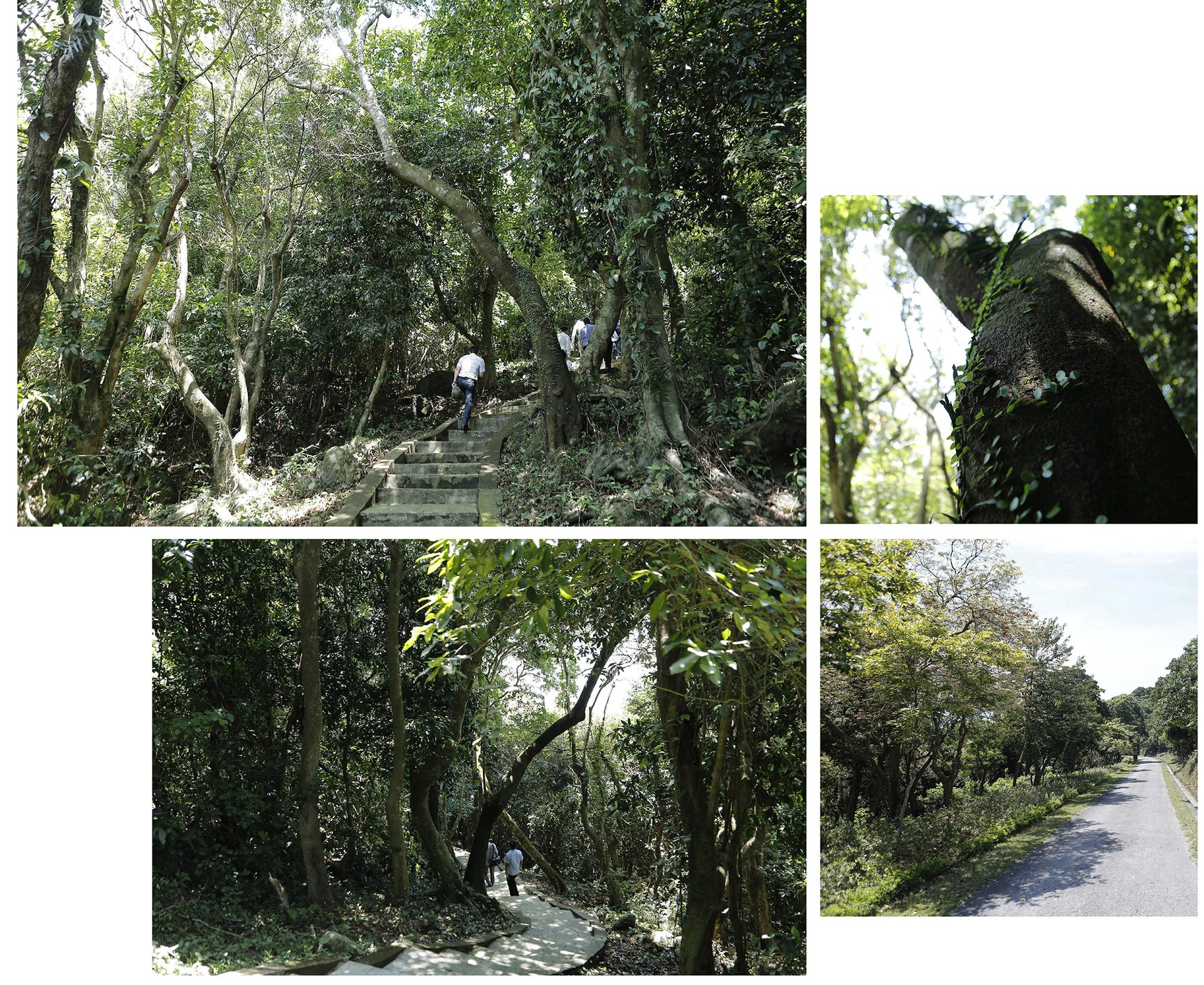

Located about 11 kilometers off the mainland, Hon Me is one of the potential areas for seafood exploitation and the development of marine ecotourism. However, because of its diverse ecosystem, the area is also more sensitive to the impacts of environmental pollution. Waste drifting from the mainland, unsustainable fishing activities, and the risk of oil spills all threaten to wipe out rare marine species that inhabit the waters surrounding the island.
Anticipating these threats to the marine ecosystem around Hon Me, for many years, the journey to keep the sea clean has been launched in the southernmost waters of Thanh Hoa province, from the mainland to remote islands like Hon Me. This journey began with seemingly simple yet sustainably meaningful actions such as coastal cleanups, community awareness-raising campaigns, investment in waste collection and treatment systems, and, most importantly, the long-term commitment of businesses to accompany local governments in protecting the marine environment.
Therefore, initiatives like “Green Nghi Son” are being expanded to the waters around Hon Me while integrating patrols, awareness-raising communication, environmental quality monitoring, and natural habitat restoration synchronously and drastically. Functional agencies are taking practical actions to protect biodiversity, ensure sustainable livelihoods for coastal fishing communities, and preserve the region’s long-term ecological value.

Lieutenant Colonel Pham Van Tuan, Head of the Political Division at the Nghi Son Port Border Guard Command, stated that in 2025, the unit coordinated with relevant agencies to launch the “Clean Sea 2025” campaign, with the participation of more than 400 volunteers from 31 businesses, local governments, and residents. In just one morning on June 8, around 30 tons of waste, mainly plastic and industrial waste, were collected and removed from the coastal area.
Besides, the program provided nearly VND 200 million in support to coastal commune governments, including waste collection vehicles, garbage bins, and protective clothing. This not only addressed immediate needs but also created the foundation for regular waste collection and treatment, especially in remote areas such as the island area near Hon Me.
At Hon Me Island, marine environmental sanitation is regularly maintained with the active participation of stationed military personnel. On a weekly and monthly basis, the soldiers organize beach cleanups and even spend hours in the water collecting floating plastic waste. These quiet yet meaningful actions not only contribute to cleaning the living environment but also spread a powerful message about the shared responsibility for protecting the marine environment.


